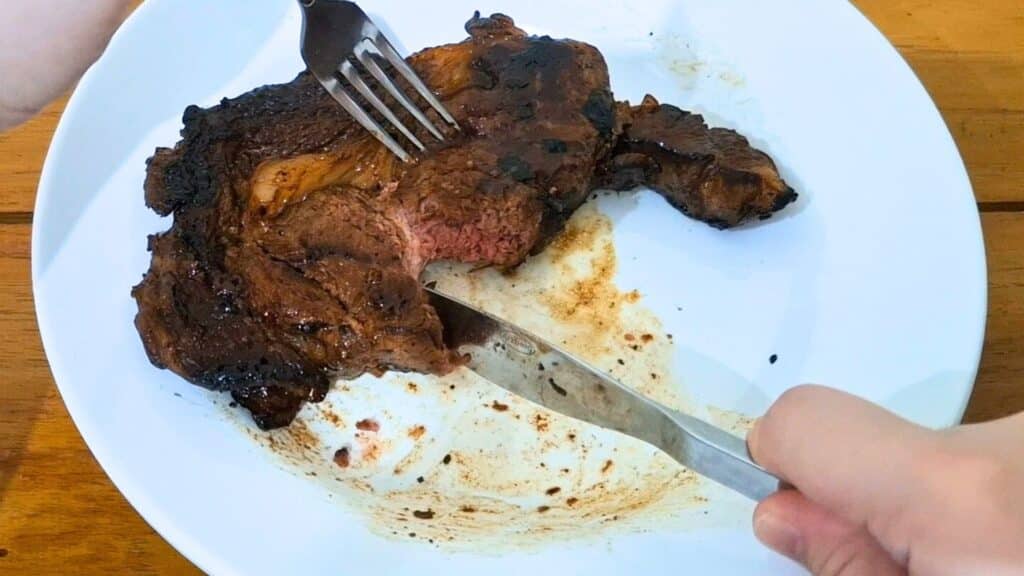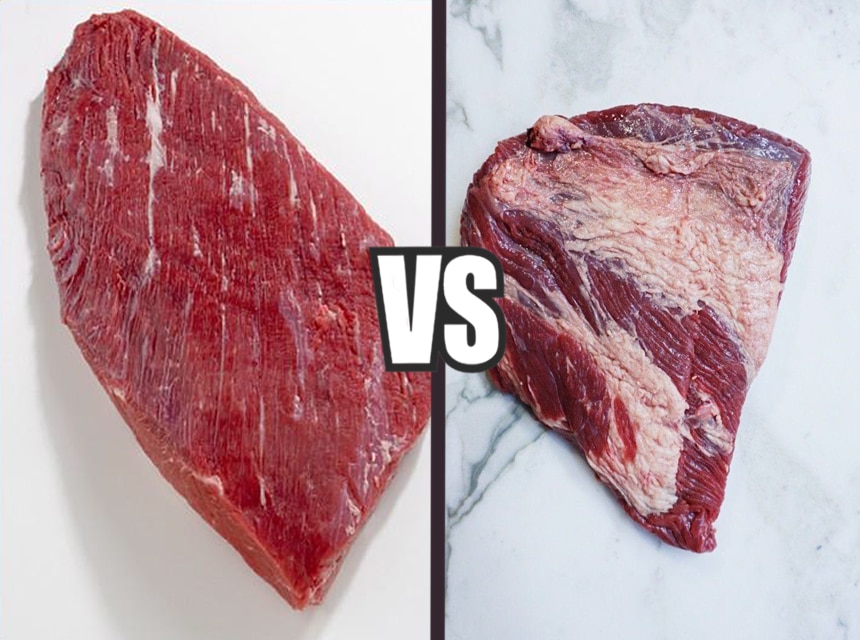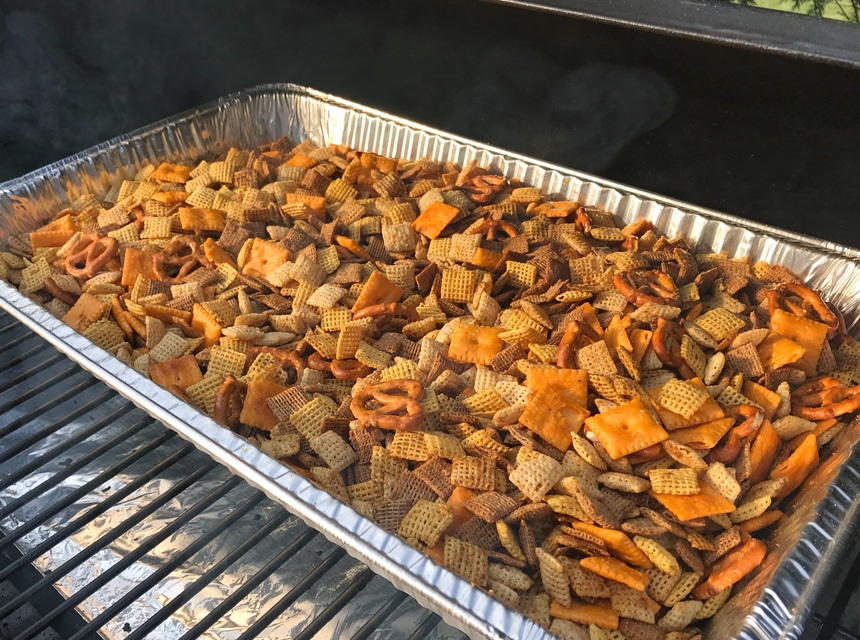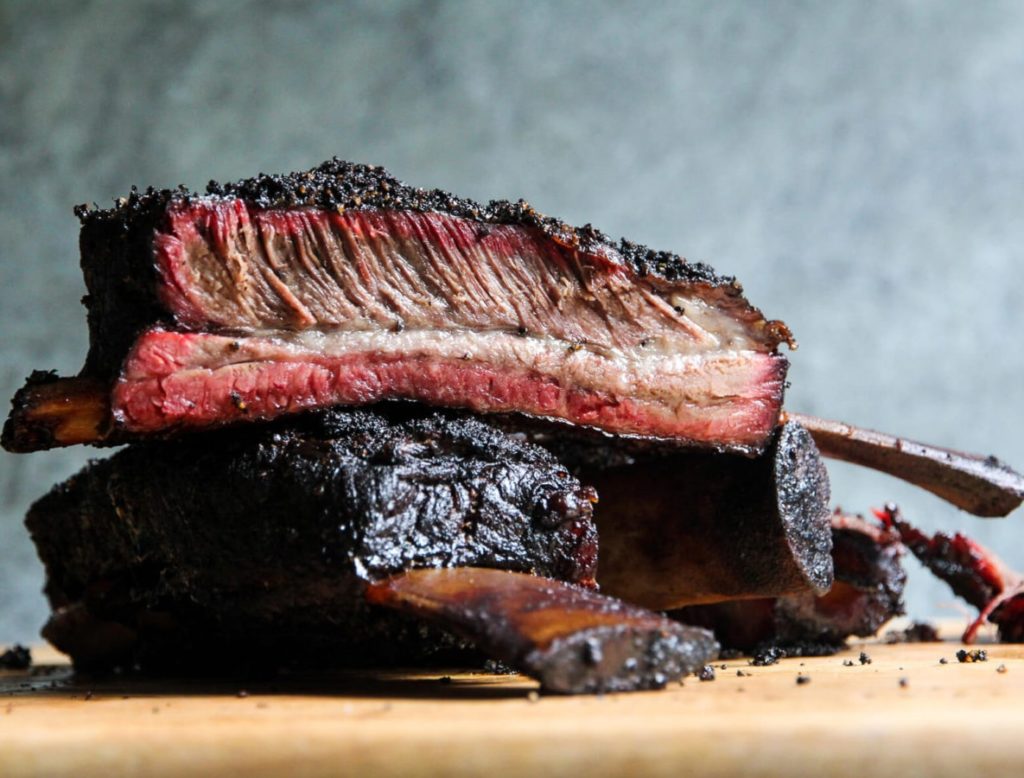

When you ask the question, what’s for dinner and the answer is steak, that’s usually the end of the conversation. But in the world of steak, there are many cuts of beef and choosing the right cut means your meal will either end up being delicious or turn out disastrous. A cow is a large animal and there are many ways to cut it up for steak. While two cuts, skirt steak vs flank steak, may be common, not many people actually understand their purposes and how best to cook them. You may have seen them on a restaurant menu or at your grocery store but are still unsure of how to cook them. Well, you’re in luck as this article will tackle both the skirt steak and the flank steak cut, explain what they are and how to cook them to perfection.
Long and thin, skirt steak comes from the diaphragm muscles in a cow. While it is lean and does not contain a lot of fat, its large muscle content makes it a very tough cut of steak.
One of the major reasons that skirt steak is used is because of its flavor. It is a very intense, beef flavor that really elevates a dish.
One reason that there is such a common misunderstanding between flank steak vs skirt steak is that they are both long, thin cuts of beef. However, while they are similar in appearance, they are still quite different.
Flank steak come from the abdominal area of a cow. Because of where it is located, the muscle fibers are quite tough and there is very little fat. While there is a nice, beefy flavor to flank steak, it can be tough in texture.
Let’s get into what exactly are the similarities and differences between skirt steak and flank steak.
The cow is a large animal and there are many different places to find meat Trusted Source Cut of beef - Wikipedia During butchering, beef is first divided into primal cuts, pieces of meat initially separated from the carcass. These are basic sections from which steaks and other subdivisions are cut. en.wikipedia.org . For skirt steak, the cut comes from the diaphragm area. While this is the underside of a cow, it is up close to its lungs around its fore legs.
In contrast, flank steak comes from the abdominal muscles in a cow. This is still in the underside of a cow, but closer to its hind legs.
Both areas are hard-working muscles. Neither cut has much fat on them, which is why they are referred to as lean cuts of meat. As well, the muscles are quite tough. Neither cut is made for simply grilling as it will produce a very tough, chewy texture. Instead, you will want to marinade or slow cook these meats to help break down the tough muscle fibers.
One of the major reasons why people are so confused about these two cuts of beef is that they look quite similar in size. Both skirt steak and flank steak are long and thin. However, once you look closely, you will be able to note some differences.
For starters, skirt steak, while still relatively thin, is thicker than flank steak. Sometimes, it can even be twice as thick. Moreover, skirt steak can be just a bit longer than flank steak.
The texture of the meat is where the biggest difference lies. Neither cut has a lot of fat content so you will have to look at the fat pattern, called marbling. For skirt steak, the ribs of muscle are a bit thicker and any fat you can find is also a bit thicker.
In contrast, flank steak has a very even, think distribution of muscle lines that are interspersed with equally thin lines of fat. Also note the direction of the muscle. With skirt steak, the muscle runs on a slight diagonal. With flank steak, the muscle runs vertical, from the top of the cut to the bottom.
When it comes to the meat content of, meat, you would think it would all be equal. However, there is a lot more than just meat that goes into a cut of beef.
Skirt steak is considered moderately meaty. This is because it is offset by its fat content. While still lean, still has some marbling between the muscle fibers.
Flank steak, which is more lean than skirt steak, is considered to be very meaty. When you cook it, you will have relatively the same amount of steak because there won’t be a lot of fat content that dissolves during the cooking process.
While most people eat around fatty deposits on their steaks, it does serve a purpose in the cooking process. As steak cooks, the fat breaks down and helps to flavor the steak, giving it that tender, delicious taste. Steak cuts that don’t have a large fat content need to get their extra flavoring from an external source.
This is the case with both skirt steak and flank steak. Neither are very fatty and instead they fall into the category of lean cuts of meat. You will see when you purchase either in their raw form that there is very little fat. This means that you need to properly cook both pieces of meat.
Without a large fat content, neither but is good for simply grilling. Instead, you will want to pan-fry them with butter oil so that the extra fat can be absorbed by them. Alternatively, you can marinade both cuts of steak. While this won’t add fat content, it will provide necessary flavoring.
When we talk about tenderness in steak, we mean that melt in your mouth flavor. Think a beef tenderloin. You can cut into it with ease and in just a few bites it has dissolved in your mouth. The reason certain cuts of beef are so tender is that these muscles are not used as much.
For example, beef tenderloin is found under the ribs of a cow, near its backbone. It doesn’t get a lot of use and so the muscle fibers are not very tough.
Skirt steak comes from a part of the cow that is used a lot. This muscle, near the diaphragm, is used daily. As a result, it has very coarse muscle fibers.
Similarly, flank steak is also used a lot, However, it is less tender in comparison to skirt steak. Everything is relative, though, and both cuts should be treated as fairly tough cuts of meat to get the best results from cooking.
While both flank steak and skirt steak have nice, beefy flavors to them, skirt steak has a slight advantage. Its muscles definitely give it hat quintessential beef taste.
What’s interesting, though, is that both skirt steak and flank steak are often marinaded, in order to help break down their muscle fibers. They are also rarely served on their own, instead used in making other dishes. So, there’s a good chance that you won’t really know what they taste on their own.
While both cuts of meat are relatively small, they do weigh different amounts. Skirt steak, while long, is quite thin and so usually weighs 1.25 to 1.5 pounds. In contrast, the thickness of flank steak allows it to weigh about 2 pounds.
Depending on how you prepare it, you can expect about three servings from a cut of skirt steak and about four servings from a cut of flank steak.
There are many ways to prepare skirt steak and they all depend on what you want the end results to be.
A marinade is a fan-favorite. You can make something simple, with spices, garlic, olive oil, and soy sauce. Then, leave the skirt steak overnight before cooking up your masterpiece.
For cooking methods, there are many options. If you have marinated your skirt steak, then you can sear it over high heat. The marinade will help break down the muscle fibers, leaving your steak more tender than you would expect. The high heat is important as skirt steak is a thin cut. It won’t take long to cook it and instead you can have a crispier outside with a medium or rare inside that will really enhance its natural flavors. Once grilled, you can serve skirt steak with fajitas.
Another way to cook skirt steak is by slow cooking it. If you don’t want to marinade your skirt steak, this is another good way to break down the muscle fibers. Cooking the steak for a long time at a low heat will help it retain its flavor while also making the tough cut of meat more tender. You can then serve the slow-cooked meat with a sauce for a yummy meal.
If you do decide to grill your skirt steak, always cut is against the grain. This will help increase the tenderness of the meat.
Here are few recipe inspirations for when you want to cook skirt steak.
Start by marinading your skirt steak ahead of time. While you want at least a few hours of marinading time, you can also save some prep time and get everything ready the night before.
A simple skirt steak marinade will include olive oil, balsamic vinegar, soy sauce, and Worcester sauce. For a sweeter taste, you can add honey. For a spicier taste, add some jalapenos. Round out your marinade with salt, pepper, and onion. Really, with a marinade, you can manipulate the flavors to your own preferences.
After your skirt steak has been in its marinade for at least a few hours, it’s time to cook it. Heat up a frying pan and add a bit of oil. Sear one side of the steak for a few minutes before flipping it over and searing the other side. You want your steak to be between rare and medium. Aim for the middle to be pink.
The marinade will break down the muscle fibers but if you cook skirt steak for too long, it will become tough and chewy.
While searing your steak, you can prepare your rice and a sauté a mix of vegetables, including peppers, peas, and mushrooms. Serve everything together in a big bowl and enjoy.
Street tacos from Mexico are absolutely divine and you can definitely recreate them at home. Carne asada tacos are popular and they normally use skirt steak.
Start by marinading your skirt steak but this time, add more Mexican flavors. In your marinade, include spicier elements such as chiles and lime. You can also add orange juice for a sweetness that will cut the acidity and hot of the other ingredients. Round out your marinade with white vinegar, garlic, salt, and pepper.
Place your marinaded skirt steak on a grill in order to give it a smokier flavor. If you are using a charcoal grill, follow these instructions for the perfect sear.
Try not to flip it too often and aim for a medium-rare finish. When cooked, let it rest for a few minutes and then slice it against the grain. This way the meat will fall apart better, making it less tough.
Serve your steak with soft flour or corn tortillas. Add salsa, guacamole, and cheese. Then, top with a bit of chopped up cilantro and a lime wedge. Just make sure you cook enough skirt steak as you’ll be wanting to enjoy these tacos over and over again.
Preparation is key with flank steak. While it is not as tough as skirt steak, it still needs a bit of love for proper enjoyment.
Similar to skirt steak, a marinade is always a good option with flank steak. Again, something simple is key. If you are going camping, preparing your flank steak in a marinade is an easy way to ensure you eat like royalty while out and away from modern conveniences.
You can also grill flank steak, and if you have marinaded it, it will turn out even better. Use high heat to sear the steak and try to keep the inside rare to medium. If you cook it well-done, it will become too tender and lose a lot of its natural flavors.
A really novel way to prepare flank steak is to stuff it. Because it is such a thin cut of meat, it does well if you want to manipulate it. Stuff your flank steak with something sumptuous like crab meat and the tougher cut of meat will absorb these extra flavors.
Want to really impress your company? Why not try rolling your steak. The result is a burst of flavors that looks amazing.
Also known as a roulade, the key to making a rolled flank steak is starting with a thin cut of meat. Although flank steak is naturally thin, you want to make it even thinner. Head to your local butcher and ask them to butterfly the steak, or slice it in half. You can even use a meat tenderizer to make the flank steak that much thinner.
To help break down the muscle tissues, you should marinade your flank steak. Prepare a simple marinade with olive oil, white wine vinegar, garlic, pepper, and parsley. Place the steak in the marinade for at least a few hours.
Nest, it’s time to prepare the filling. You can really choose your ingredients but a classic pairing includes prosciutto, roasted red pepper, parsley, basil, and parmesan cheese. Mix these ingredients together and then spread them out on the flank steak.
Roll up the whole steak and try to make it tight so that the stuffing doesn’t fall out. Tie everything together with cooking string so that it stays together.
Place the rolled up steak in the oven. Cook at 350 degrees Fahrenheit for 25 to 30 minutes. You don’t want to overcook the steak and instead aim for medium-rare or a nice pinkness in the middle.
Let the dish rest for a few minutes. With a nice, sharp carving knife, slice the roulade into strips. The result will be a gorgeous spiral that showcase the meat and the stuffing. Serve on a platter to get the full effect.
While there are many ways to cook flank steak, it can definitely be cooked on its own, served with the sides of your choice. The key, however, to making this steak really pop is all in the marinade.
Although there are many marinades to choose from, you can’t go wrong with a mix of sweet salty. Mix together olive oil, red wine vinegar, garlic, and pepper. Then, add soy sauce and honey. The sweetness of the marinade will really enhance the natural beef flavor. Let the flank steak marinade for at least four hours, although you can definitely prep everything the night before.
Flank steak needs a bit of extra care when grilling, so make sure you have a grill that can have both high heat and low, indirect heat at the same time, like the Weber Genesis.
Take the flank steak out of the marinade, but make sure there is enough left on it to keep from sticking to the grill. Place the flank steak on the area of the grill that has the high heat. You only need to cook the meat for two minutes per side.
Once this is done, move the flank steak over to the warm but indirect heat side. Cover the barbecue with the lid and let the steak cook a bit more. This will ensure the steak is properly cooked while not burning the outside.
Wait until your steak is about medium rare. Then, remove it from the grill and let it rest for a few minutes.
Slice your steak against the grain. For best results, use a knife with divots along its edge, like the Ergo Chef. The presence of these divots means that no meat will stick to the knife as you slice.
And voila! Your marinaded flank steak is ready to serve. Pair it with your favorite veggies and your choice of potatoes.
Why do you need to cut against the grain with steak?
When you look at a piece of meat, you will see natural lines that run through it. These are the muscle fibers. If you aren’t sure about the lines after the meat is cooked, be sure to look when it is raw as it may be easier to see.
You want to cut against the grain, or perpendicular to the grains of muscle. If you cut parallel, or with the grain, your meat will not taste as tender.
This is because you’re essentially making more areas where the meat will naturally fall apart. With tougher cuts of beef, like skirt steak and flank steak, you want it to be as tender as possible. The easier the meat will fall apart while chewing, the better your experience will be.
When cutting meat, make sure you have nice, even cuts. Invest in a high-quality knife to make the experience better.
What are the internal temperatures for rare and medium-rare steak?
We talk a lot about how done steak should be, ranging from rare to well-done. Over time, you will be able to note the differences simply by the feel of the steak but when you’re just starting out, it can be hard to figure out these terms.
A meat thermometer can help you find the right doneness for your steak. Insert the thermometer into the middle of your steak and wait a few seconds for the temperature to register.
Can I substitute flank steak for skirt steak, and vice versa?
There’s a reason that these two cuts of beef are often confused. While they are different, they have enough similarities to be used interchangeable. In fact, many recipes will state that if you can’t find one cut of beef, you can use the either.
Just keep in mind that flank steak is a bit tougher. Therefore, you will want to marinade it or cook it at a lower temperature for longer, in order to help break down the muscle fibers.
Hopefully, deciding on what’s for dinner got a bit easier after reading this recipe. Steak is delicious and there are many different cuts that can be turned into amazing recipes. You can use skirt steak in a scrumptious stir-fry or you can choose flank steak and whip up some mouth-watering fajitas. When it comes to skirt steak vs flank steak, it’s all about finding the perfect recipe and cooking your meat appropriately. The more experimenting you do, the more recipes you will fall in love with. Hopefully, the age-old debate about what’s for dinner is now a thing of the past.





